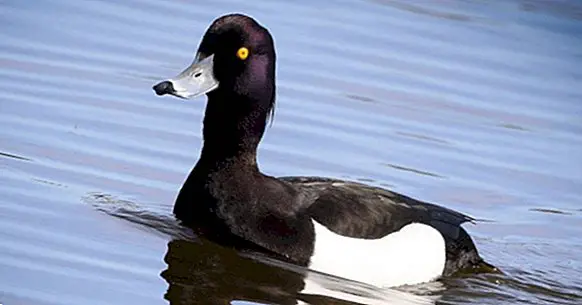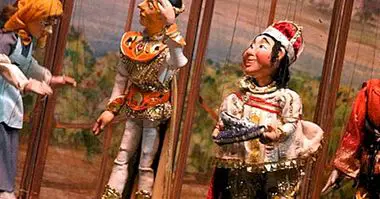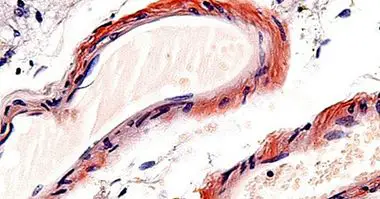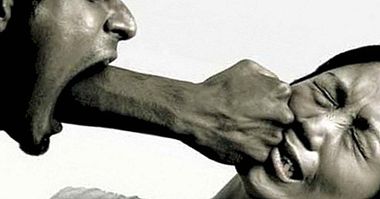Anatidaefobia: the joke phobia related to ducks that look at us
There are many stimuli and situations in the world that can generate fear. The fact of having it is in most cases adaptive, since it is an emotion that induces us active responses to face a possible threat or to flee from it, allowing our survival and adaptation to situations.
However, sometimes the panic reaction that can be experienced before a stimulus is excessive compared to the threat that the stimulus supposes, or the stimulus in question does not represent any danger for the subject in question. This is what happens to subjects who suffer from phobias. Among them there are some that are more understood than others, which can sometimes be socially valued as rare or extravagant. In fact, fictitious phobias have been developed to generate a comic counterpoint to this type of pathology.
An example of the latter is the anatidaefobia: the fear of being observed by a duck . This concept gives us the opportunity to differentiate between probable and improbable phobias. And is that some of these anxiety disorders are so specific that they seem pure fiction.
- Related article: "Types of phobias: exploring the disorders of fear"
What is anatidaefobia?
The term anatidaefobia refers to a fictional specific phobia that gathers on the one hand characteristics to that phobia specific to animals and on the other situational type. Specifically, we are talking about the fear of being observed by a duck.
As a specific phobia (of fibs), it supposes the existence of panic and dread to a stimulus or type of concrete stimulation, causing the exposure to the stimulus or the idea that this will appear a very high level of anxiety. This anxiety can generate different physiological symptoms such as headache, hypertension, acceleration of the heart and respiratory rhythm, sweating, fainting or even anxiety crisis. Also, to avoid these sensations the subject who suffers it usually flee or perform avoidance behaviors , or endure them with a very high discomfort.
In the case that concerns us, the anatidaefobia, the term that identifies it was invented by a caricaturist .
The supposed affectation that generates the anatidaefobia can be variable. Most people have little contact with these birds, it is not usual to find them, something that apparently make it difficult for this fear to generate great difficulties, beyond the avoidance of parks, ponds and lakes. However, the fear in question would appear when observed by these birds, something that would include the possibility of being observed without noticing it. Thus it would be possible for avoidance behaviors to appear even in less obvious places , such as the street (it is a bird with the ability to fly after all). In addition to this can generate relational problems, derived from the possible ridicule of their fear.
Now ... what is it, specifically, what makes this phobia a joke, unlike other real phobias that seem so absurd? The key is in its possible causes.
- Maybe you're interested: "Types of Anxiety Disorders and their characteristics"
Causes
The causes of the existence of different phobias have been the subject of scientific discussion throughout history, elaborating different theoretical perspectives and models in this regard.
Among them would be, in the case of animal and situational phobias, the theory of Seligman's preparation . This author considered that a possible explanation of phobias would be linked to inheritance, because our ancestors would have learned and transmitted the propensity to react with fear to stimuli that threatened their survival, as occurs with spiders and scorpions and even some kind of bird.
In this sense, throwing imagination, the phobia that occupies us could have in part an evolutionary sense: the ducks are flying animals that could be compared with birds of prey, which are capable of stalking us from above. However, the reality is that it makes little sense to develop an innate psychological mechanism of this style . First, because birds of prey do not hunt or have hunted humans (with the possible exception of Haast's eagle, now extinct). Second, because even if there were birds that posed a danger, this would have to be very important so that it compensates to be always alert in case a bird is watching us. And third, because it does not make sense to develop this fear only in the case of ducks, and not in the case of other carnivorous birds.
Another of the great perspectives taken into account when acquiring a phobia is the learning and internalization of the fear of a concrete stimulus.This is possible, for example, in the face of the experience or visualization of an aversive experience, especially if it occurs during childhood. In anatidaefobia, it could happen that in childhood a duck would have attacked us at some point , after having been observing us, and that we associate his observation with the pain or fear felt during the attack. Another option can be in people who have been humiliated or made or suffered an act that embarrasses them, in the presence of these animals. But this is unlikely enough to make it absurd to create such a diagnostic label.
What treatments are used in phobias?
As with other phobias, the most indicated therapies in the case of anatidaefobia, if any, would be exposure therapy or systematic desensitization . This therapy is based on the gradual exposure to the feared stimulus through the monitoring of a hierarchy developed between professional and client, in such a way that little by little the subject is exposed to situations that generate anxiety (starting with those that generate an average anxiety). to go forward little by little).
In the case that concerns us, for example, items could be included such as approaching a park, going to a farm, observing a duck at different distances and with supervision, then without supervision and later incorporating more birds. However, this is an example, depending on the hierarchy in question of the stimuli provided by the patient or that are developed together with the professional.
Also cognitive restructuring is helpful to modify dysfunctional beliefs about these birds or what might involve being observed by them. Also expressive techniques could be useful to help those affected to free themselves and express their discomfort. Finally, relaxation techniques are highly recommended to lower the level of activation, and in extreme cases can be used pharmacological treatment.



















